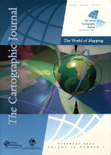
CARTOGRAPHIC JOURNAL
Scope & Guideline
Navigating the Future of Geographic Information Systems
Introduction
Aims and Scopes
- Historical Cartography:
Focuses on the evolution of cartographic practices, including the study of historical maps, their production, and their impact on society and politics. - Cartographic Design and Visualization:
Explores the principles and techniques involved in creating effective and aesthetically pleasing maps, including the use of color, symbols, and layout. - Geospatial Technology and Methods:
Investigates advancements in geospatial technologies such as GIS, remote sensing, and data visualization, and their applications in modern cartography. - Ethics and Social Implications of Mapping:
Addresses the ethical considerations and societal impacts of cartographic practices, including issues of representation, accessibility, and data privacy. - Educational Cartography:
Examines the role of maps in education, including the development of educational tools and methodologies for teaching cartographic concepts. - Interdisciplinary Approaches to Cartography:
Encourages collaboration across various fields such as geography, history, sociology, and environmental science to enrich cartographic research and applications.
Trending and Emerging
- Geospatial Ethics and Social Justice:
There is an increased focus on the ethical implications of mapping practices, particularly in relation to social justice, representation, and the historical context of maps in marginalized communities. - Interactive and Dynamic Mapping:
Research on interactive mapping technologies and dynamic visualizations is gaining momentum, showcasing the potential for engaging users and enhancing map usability. - Data-Driven Cartography:
The integration of big data and machine learning techniques in cartographic practices is emerging as a significant theme, allowing for more sophisticated analyses and representations of spatial information. - Environmental and Climate Mapping:
The journal is increasingly publishing works that address environmental issues, emphasizing the role of cartography in visualizing climate change, resource management, and sustainability. - Community-Based Participatory Mapping:
There is a growing interest in participatory mapping approaches that involve local communities in the mapping process, enhancing the relevance and accuracy of spatial data.
Declining or Waning
- Traditional Topographic Mapping:
There has been a noticeable decrease in papers focused solely on traditional topographic mapping techniques, possibly due to the rise of digital mapping technologies that offer more dynamic and interactive representations. - Soviet Cartography:
Research centered on Soviet mapping practices appears to be diminishing, as newer thematic studies and methodologies gain traction, reflecting a broader international focus in cartography. - Static Map Evaluation Methods:
The exploration of static methods for evaluating map effectiveness is being overshadowed by more innovative approaches, such as interactive and user-centered design methodologies.
Similar Journals
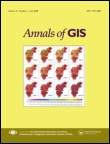
Annals of GIS
Bridging Theory and Practice in GISWelcome to the Annals of GIS, a leading academic journal published by Taylor & Francis Ltd, dedicated to advancing the field of Geographic Information Science and its applications. With an ISSN of 1947-5683 and an E-ISSN of 1947-5691, this Open Access journal has been ensuring wide accessibility since 2019, thereby bolstering the dissemination of knowledge in areas such as remote sensing, spatial analysis, and geoinformatics. Hailing from the United Kingdom, the journal ranks impressively within its categories, achieving a Q2 status in Computer Science Applications and a prestigious Q1 ranking in Earth and Planetary Sciences for 2023, placing it in the top 10% among its peers. With a focus on innovative research spanning from 2009 to 2024, the Annals of GIS serves as a vital platform for researchers, professionals, and students alike, providing insights and fostering discussions that push the boundaries of geographic technologies and their real-world applications.
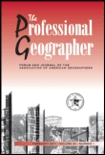
PROFESSIONAL GEOGRAPHER
Where Geography Meets Impactful Research and CollaborationPROFESSIONAL GEOGRAPHER is a prominent journal in the fields of geography and earth-surface processes, published by Routledge Journals, Taylor & Francis Ltd. With a rich history dating back to 1949 and continuing through 2024, it serves as a vital platform for researchers, professionals, and students to explore and disseminate groundbreaking research and insights within the geographical sciences. The journal holds a respectable impact factor, placing it in the Q2 quartile for both Earth-Surface Processes and Geography, Planning and Development as of 2023, highlighting its importance in these critical academic areas. The journal ranks #273 out of 821 in Geography and Planning and #70 out of 179 in Earth and Planetary Sciences on Scopus, reflecting its robust contribution to advancing knowledge in social sciences. Although it does not currently offer open access options, it still provides invaluable content that influences pedagogy and research in geography. Its comprehensive scope invites a wide range of geospatial topics, encouraging interdisciplinary dialogue and collaboration across the global academic community.

Materia Arquitectura
Advancing architectural dialogue for a sustainable future.Materia Arquitectura, published by the Universidad San Sebastián, Facultad de Arquitectura y Arte in Santiago, is a leading open-access journal dedicated to the dynamic field of architecture. With its ISSN 0718-7033, this journal has established itself as a vital platform for disseminating cutting-edge research, innovative design practices, and critical discourse surrounding architectural theory and education since its transition to open access in 2017. The journal's commitment to fostering academic collaboration and knowledge sharing is reflected in its inclusive approach, welcoming contributions from researchers, practitioners, and students alike. By providing free and worldwide access to its content, Materia Arquitectura significantly enhances the visibility and impact of architectural scholarship, making it an essential resource for anyone invested in the future of architecture and design.

South African Journal of Geomatics
Empowering Geomatics Research Through Open AccessSouth African Journal of Geomatics is a pivotal platform dedicated to the advancement of geomatics, focusing on the dynamic intersection of geographic information science, surveying, and mapping technologies. Published by CONSAS CONFERENCE, the journal serves as a crucial resource for researchers, professionals, and students in the geomatics field, providing insightful, peer-reviewed articles that explore contemporary challenges and innovations. Operating under an open-access model, the journal ensures the wide dissemination of knowledge, promoting collaboration and scholarly exchange among the global geomatics community. With a commitment to enhancing the visibility of significant research and fostering academic discourse, the South African Journal of Geomatics plays a vital role in contributing to the development of this essential discipline in South Africa and beyond.
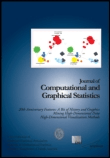
JOURNAL OF COMPUTATIONAL AND GRAPHICAL STATISTICS
Exploring the intersection of computation and graphical representation.JOURNAL OF COMPUTATIONAL AND GRAPHICAL STATISTICS is a premier academic publication dedicated to advancing the fields of computational statistics and graphical data representation. Published by Taylor & Francis Inc, this journal stands out with its impressive Q1 rankings in Discrete Mathematics and Combinatorics, Statistics and Probability, and Statistics, Probability and Uncertainty, reflecting its high impact and relevance in contemporary research. Since its inception in 1992, the journal has been a vital resource for researchers, professionals, and students alike, with its rigorous peer-reviewed articles contributing significantly to the science of data analysis and visualization. With a Scopus ranking placing it within the top tiers of its category, the journal is committed to disseminating high-quality research that promotes innovation and methodological advancement. Note that the journal currently follows a traditional subscription model, ensuring focused and curated content for its readers. As it approaches the horizon of 2024, the JOURNAL OF COMPUTATIONAL AND GRAPHICAL STATISTICS continues to foster scholarly discourse and discoveries, making it an essential platform for anyone involved in statistics and data science.

Documents d Analisi Geografica
Navigating the Future of Earth-Surface ResearchDocuments d'Anàlisi Geogràfica is a distinguished academic journal published by Universitat Autònoma de Barcelona, focusing on the fields of geography, planning, and earth-surface processes since its inception in 1988. With an Open Access policy implemented in 2012, the journal aims to facilitate the widespread dissemination of geographical research and insights, accessible to a global audience. Currently ranked in Q3 for both Earth-Surface Processes and Geography, Planning and Development categories, it serves as a vital platform for researchers, practitioners, and students to share their findings and enhance knowledge in these critical fields. The journal is indexed in Scopus, where it stands at rank #470 in Social Sciences and #106 in Earth and Planetary Sciences, reflecting its growing impact in relevant academic communities. Based in Barcelona, Spain, Documents d'Anàlisi Geogràfica continues to contribute substantially to geographical scholarship by exploring contemporary issues and advancements in a rapidly evolving world.
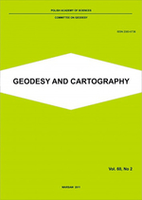
Geodesy and Cartography
Connecting Researchers to Shape the Future of MappingGeodesy and Cartography, published by the Polska Akademia Nauk (Polish Academy of Sciences), is a premier open-access journal dedicated to advancing the fields of geodesy, cartography, and geographic information science. Since its inception in 2010, the journal has provided a vital platform for researchers, professionals, and students to share their findings, fostering innovation and collaboration in these critical areas of study. With its ISSN 2080-6736 and E-ISSN 2300-2581, the journal is accessible to a global audience, ensuring that cutting-edge research is readily available to enhance scientific understanding and application. The journal not only serves as a repository of knowledge but also aims to contribute to the development of best practices and methodologies within geospatial sciences, making it an essential resource for anyone invested in the ever-evolving landscape of mapping and spatial data analysis.

International Journal of Spatial Data Infrastructures Research
Empowering Research Through Open Access InnovationThe International Journal of Spatial Data Infrastructures Research is a prestigious, open-access publication dedicated to advancing knowledge in the field of spatial data infrastructures. Published by the European Commission, Joint Research Centre, this journal has been a vital resource since its inception in 2006, promoting innovative research that informs policy and practice in geographic information systems and spatial data management. With a robust commitment to open access, the journal ensures that critical findings are readily available to researchers, professionals, and students globally, fostering a collaborative environment for the development of spatial technologies. The journal's unique focus on spatial data infrastructures makes it an essential platform for sharing empirical studies, theoretical advancements, and practical applications, ultimately driving the evolution of smart, sustainable geospatial solutions.

Acta Geographica Slovenica-Geografski Zbornik
Advancing geographical knowledge through open dialogue.Acta Geographica Slovenica-Geografski Zbornik is a prominent academic journal published by the Geografski Institut Antona Melika ZRC SAZU, situated in Slovenia. This open-access journal, active since 2003, has made significant strides in the fields of cultural studies, geography, and earth sciences, earning impressive rankings in its respective categories—Q1 in Cultural Studies and Q3 in both Earth and Planetary Sciences and Geography, Planning and Development. With an impactful presence evidenced by its Scopus rankings, including being placed in the 90th percentile for Cultural Studies, Acta Geographica Slovenica serves as an essential platform for researchers, professionals, and students alike, facilitating accessible scholarly dialogue and contributing to the development of geographical and cultural knowledge. The journal is dedicated to advancing research that develops innovative perspectives on geographical phenomena, making it an invaluable resource within the academic community.
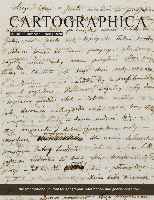
Cartographica
Navigating New Frontiers in CartographyCartographica is a premier academic journal dedicated to the field of cartography and geospatial sciences, published by University of Toronto Press Inc. This esteemed journal, with an ISSN of 0317-7173 and an E-ISSN of 1911-9925, serves as a critical platform for researchers and practitioners in the Earth-Surface Processes category, currently positioned in the Q3 quartile with a rank of #99 out of 179 in its field, reflecting its growing influence and relevance among peers. Since its inception in 1980, Cartographica has been committed to advancing the study of cartography through innovative research, critical analysis, and comprehensive review of developments in mapping technologies and applications within the geospatial sciences. Although not an open-access journal, it offers valuable insights and research findings that significantly enhance the understanding and practices within this specialized domain. Researchers, professionals, and students alike will find Cartographica to be an essential resource for staying abreast of the latest trends and methodologies in cartographic research.